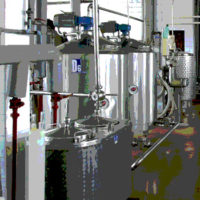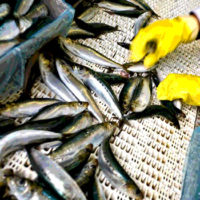Sponsored Content
FSMA Preparation: Is Your Pest Management Program Compliant?

By now, you and your staff have likely spent hundreds of hours reviewing documents, attending seminars, gaining the necessary certifications, and dissecting internal procedures to ensure compliance with the Food Safety Modernization Act (FSMA).
It’s safe to assume that there are very few areas of your operation that have not been touched in some form or fashion.
As I visit with clients, I see increases in staffing, newly established roles, and technology implementations to support the new requirements. I think all of us would agree that the new laws have our attention, and we have never had a stronger sense of urgency in preventing food safety issues.
While you’ve focused your efforts on changing the culture in your organization and verifying that your facilities are compliant with the new regulations, ask yourself one question: Has your pest control vendor done the same?
I ask this question because we continue to see nonconformances—both major and minor—that are a direct result of pest-related issues.
The pest-control program seems to be the one area where the facility gives total control over to someone other than an internal staff member, leaving the company completely at the mercy of the service provider.
Most pest control providers have the requisite understanding of pests, seasonal and regional issues, state-specific regulatory requirements, and control techniques. The problem is that many of these providers have limited training on food safety or on your specific third-party audit scheme.
As a result, your pest control program has likely not changed much over the years.
Your team is probably not concerned about making a change unless there is a pest control issue, and your pest control vendor may not know what is expected of them under the new standards.
As a result, there’s a good chance that you have a dinosaur of a pest management program bolted onto a brand new, state-of-the-art food safety system.
Here are some of the questions that should be on top of your list when speaking with your current provider:
Can you provide evidence or supply training records showing that you or members of your staff have been trained in food safety and/or our specific audit scheme?
If they value you as a client, they should be keeping up to speed on all the items that are impacting your organization and adjusting their program accordingly. It’s not your responsibility to educate your pest control provider and teach them what they should already know.
What technological advancements are you implementing or considering in the future?
You have made a lot of advancements over the years and your vendors must keep up the pace if they intend to stay relevant. There’s a tremendous amount of research and development happening today in pest control, with new products and tools entering the market on a regular basis. If your provider isn’t adding some of them to their offerings, your program may not be advancing as it should.
Do you employ a board-certified entomologist or have one established as a consultant?
An entomologist on staff or retainer can provide valuable resources, including review and oversight of your current pest control program, identification of insects, and training. Many entomologists are actively involved in research and field trials, and most have strong connections with leading universities.
What are the value-added elements that you offer?
?Beyond the basic requirements of the contract, what does the pest control vendor provide for you and your team’s benefit? Do they offer free training events or specific on-site training for your staff? Do they have a quality-control division within their operation that would give you another layer of support?
In addition to these questions, there are aspects of your pest-control program that should be challenged.
For most programs, very little has changed over the years. Even if you have a new provider, chances are they priced your facility based on the number of devices and frequency of service provided in the initial bid, which of course was based on your account’s history. While it makes perfect sense to provide the device counts and frequency when you’re evaluating providers and trying to determine fair and equitable pricing, unfortunately, the outcome is often that you get the same service performed by a different company.
The good news is that you can work with your current provider to make the necessary adjustments, but you will have to challenge elements of the current program to test the knowledge of your vendor and steer the discussion in a way that will yield the best results.
Here is the list of items that should be challenged:
Total number of devices
Contrary to popular belief, you don’t need a device every 25 feet on the inside or every 150 feet on the outside of your facility. Most audit schemes now realize that the number of devices and their placement should be based on risk and previous activity. If you can demonstrate, based on your history, that certain devices are not needed, you can justify removal. If you have devices that are constantly being destroyed by forklifts, or blocked by pallets of product, they may not be necessary. The auditor expects that every device will be inspected according to the frequency spelled out in your scope of work, but if these devices have no history of captures, there’s a good chance they’re not needed.
Frequency of service
Review your audit standard to ensure that you are meeting the basic requirements but challenge the provider on frequency of service based on type of pest, area of the country, and seasonal needs. Providers often use the fact that a certain site is in the southern part of the United States to justify more frequent service. These adjustments should be based on actual data coupled with a structural review to determine if permanent solutions might be available rather than simply increasing service frequency.
Out-of-scope treatments
Challenge any and all “out-of-scope” applications. Most of these applications are baked into your pest control program just because a single incident that occurred years ago. We often challenge pest control providers on prescheduled fogging and fumigation for this exact reason. Just because you needed a fumigation or a fogging years ago doesn’t mean that you automatically need to do this every year. If your provider is truly practicing integrated pest management, they should be carefully monitoring insect counts and looking for ways to prevent foggings and fumigations.
Proactive vs. reactive pest control management
Challenge your provider to demonstrate how their program is proactive and focused on pest prevention, as opposed to simply reacting to problems as they arise. A good way to judge this is to ask yourself if your pest control operator is listing conditions and making recommendations to prevent future pest problems. Do they seek to understand your process flow and attempt to identify gaps that could be opportunities for pest entry points? Do they stay engaged with your team and ask questions about capital improvement projects so they can inject their expertise early in the implementation process? If you can answer yes to those questions, then you have a true partnership with a provider that is adding value to your facility and shares your goal of preventing food safety concerns.
Let 2020 be the year that you tackle your pest control program by asking questions and challenging every element of your current program. An effective overall food safety program requires a vigilant approach to this challenging service.
Keith Robinson is vice president of pest control services at Fine Tune.
Looking for a reprint of this article?
From high-res PDFs to custom plaques, order your copy today!





